Hot Springs spa repair involves maintaining and troubleshooting your spa to ensure optimal performance. Regular maintenance, outlined in manuals, helps prevent damage and extends lifespan. Troubleshooting guides provide solutions for common issues, while professional help is recommended for complex problems. Proper care ensures safety, efficiency, and longevity of your spa.

1.1 Importance of Regular Maintenance
Regular maintenance is crucial for extending the lifespan of your Hot Springs spa. It ensures optimal performance, prevents costly repairs, and guarantees safety. By following the guidelines in the owner’s manual, you can identify potential issues early, such as faulty pumps or clogged jets, and address them before they escalate. Maintenance also enhances energy efficiency and keeps the water clean and sanitized. Proper upkeep includes checking electrical systems, cleaning filters, and inspecting plumbing. Neglecting these tasks can lead to malfunctions, unsafe conditions, and reduced spa longevity. Regular maintenance not only protects your investment but also ensures a consistent and enjoyable user experience. Refer to your manual for specific schedules and procedures to keep your spa in top condition.
1.2 DIY vs. Professional Repair
When it comes to repairing your Hot Springs spa, deciding between DIY and professional repair is crucial. DIY repairs can save costs and be rewarding for minor issues, such as replacing filters or cleaning jets. However, complex problems like electrical malfunctions or pump failures often require professional expertise. Manuals provide guidance for basic troubleshooting, but intricate systems may demand specialized tools and knowledge. DIY attempts on major components can lead to further damage or safety hazards. Professionals offer warranties, ensure compliance with safety standards, and handle advanced diagnostics. Weighing the complexity and risks of each issue will help determine the best approach. Always consult your manual or contact authorized dealers for recommendations on DIY versus professional repairs.

Understanding Hot Springs Spa Components
Hot Springs spas consist of key components like control panels, pumps, heating elements, jets, and plumbing systems. Understanding these parts aids in effective maintenance and repairs. Refer to your manual for detailed specifications and troubleshooting guidance.
2.1 Overview of Major Components
A Hot Springs spa is composed of several major components essential for its operation. The control panel serves as the central interface, managing settings and sensors. Pumps drive water circulation, while heating elements maintain temperature. Jets deliver massaging water flow, and the plumbing system connects all parts. Understanding these components is crucial for effective maintenance and repairs, as outlined in the manual. Regular inspection of these parts helps identify potential issues early, ensuring optimal performance and longevity. Refer to your specific model’s manual for detailed diagrams and specifications to familiarize yourself with your spa’s layout and functionality. This knowledge will aid in troubleshooting and performing necessary repairs efficiently.
2.2 Control Panel and Sensors
The control panel is the command center of your Hot Springs spa, regulating temperature, jets, and lighting. Sensors monitor water conditions, ensuring safety and efficiency. Faulty sensors can disrupt operations, requiring replacement or calibration. The control panel’s digital interface provides diagnostics, alerting users to issues like high temperature or low water levels. Regular cleaning of the panel and checking sensor accuracy are vital for optimal performance. Manuals detail troubleshooting steps for sensor malfunctions, such as resetting or replacing components. Understanding these systems empowers owners to address problems promptly, maintaining their spa’s functionality and extending its lifespan. Always consult your specific model’s manual for guidance on control panel and sensor maintenance to ensure reliability and safety. This knowledge is essential for DIY repairs and prevents costly professional interventions. Proper care ensures a seamless spa experience, adhering to manufacturer recommendations;
2.3 Pumps and Plumbing System
The pumps and plumbing system are crucial for circulating water and powering jets in your Hot Springs spa. Regular inspection is essential to prevent leaks and blockages. Over time, pumps may lose efficiency, requiring adjustment or replacement. The plumbing system, including pipes and fittings, should be checked for cracks or corrosion. Proper maintenance involves cleaning filters and ensuring all connections are secure. Faulty pumps can lead to poor jet performance or low water pressure. Consulting your manual for specific guidance on pump repair and plumbing upkeep is recommended. Addressing issues early prevents costly damage and ensures optimal water flow. Regular maintenance prolongs the lifespan of these components, keeping your spa functioning smoothly and efficiently. Always follow safety precautions when working with electrical and plumbing systems to avoid accidents. Proper care ensures reliable operation and enhances your spa experience.
2.4 Heating Elements and Jets
The heating elements and jets in your Hot Springs spa are vital for providing a relaxing and therapeutic experience. The heating elements, typically including an electric heater and sometimes a heat pump, ensure the water reaches your desired temperature. Jets, powered by the pump system, distribute water and air for massage settings. Regular maintenance involves cleaning jets to remove mineral buildup and ensuring heating elements are functioning correctly. If the water isn’t heating properly, it could indicate a faulty heating element or thermostat. Jets may become clogged, reducing water flow and pressure. Refer to your manual for troubleshooting steps or consider professional assistance for complex repairs. Proper care of these components ensures consistent heat and jet performance, enhancing your spa experience. Always follow safety guidelines when working with electrical and heating systems to prevent accidents. Regular checks and maintenance will extend the lifespan of your spa’s heating and jet systems, ensuring optimal performance.

Tools and Equipment Needed
Basics include multimeters, adjustable wrenches, screwdrivers, and pliers. Specialized tools like circuit testers and pipe cutters may be required. Source parts from SpaParts123.com or authorized dealers.
3.1 Essential Tools for Repairs
Essential tools for Hot Springs spa repairs include multimeters for diagnosing electrical issues, adjustable wrenches for plumbing, and screwdrivers for accessing control panels. Pliers and pipe cutters are handy for tubing and connections; A voltage tester ensures safety when working with electrical components. Specialized tools like circuit testers may be needed for complex diagnostics. Always refer to the official manual for specific tool recommendations. Replacement parts can be sourced from SpaParts123.com or authorized dealers. Proper tools ensure efficient and safe repairs, preventing further damage. Regularly inspect and maintain your tools to guarantee reliability. Keep a well-organized toolkit to tackle common issues promptly and effectively. This preparation is key to maintaining your spa’s optimal performance and longevity.
3.2 Where to Source Replacement Parts
Replacement parts for Hot Springs spas can be sourced from authorized dealers or trusted online retailers like SpaParts123.com. These platforms offer genuine components, ensuring compatibility and quality. Refer to your spa’s manual for specific part numbers to avoid mismatches. Online forums and communities often provide recommendations for reliable suppliers. Additionally, Hot Spring Spas’ official website offers downloadable manuals and resources to help identify and locate necessary parts. For discontinued or older models, contacting customer service or local dealers is advisable. Always verify the authenticity of parts to maintain your spa’s performance and safety. Sourcing from reputable suppliers ensures durability and proper functionality, keeping your spa in optimal condition for years.
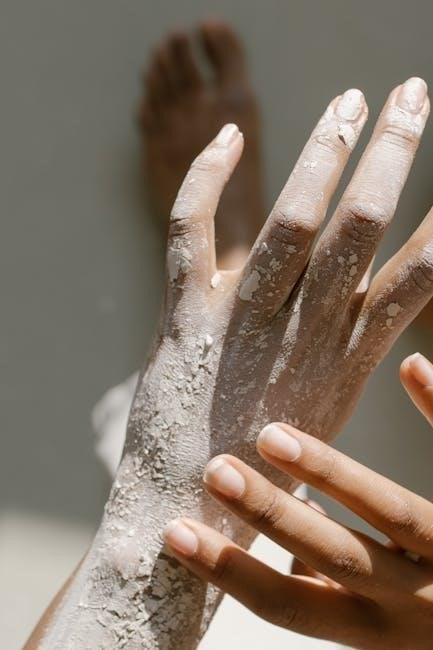
Step-by-Step Repair Guides
Identify common issues like faulty pumps or sensors, then follow detailed troubleshooting steps. Replace worn parts and test functionality to ensure repairs are effective and long-lasting.

4.1 Identifying Common Issues
Common issues in Hot Springs spas include faulty pumps, clogged jets, and sensor malfunctions. Leaks in the plumbing system can lead to water damage and inefficient heating. Additionally, electrical problems such as tripped circuit breakers or faulty control panels are frequent. Regularly checking the spa’s operation helps identify these issues early. Refer to the troubleshooting section in the manual for diagnostic guidance. Addressing these problems promptly prevents further damage and ensures optimal performance.
4.2 Repairing the Control Panel
Repairing the control panel of a Hot Springs spa involves diagnosing issues like unresponsive buttons or inaccurate temperature readings. First, ensure the power is off and the spa is disconnected. Check for loose connections or damaged wires. Replace faulty sensors or buttons as needed. REFER TO THE MANUAL FOR SPECIFIC INSTRUCTIONS. Use a multimeter to test electrical components; If problems persist, contact a professional. Proper repair ensures safe and efficient operation, maintaining your spa’s performance and longevity. Always follow safety guidelines to avoid electrical hazards during repairs.
4.3 Fixing Pump Malfunctions
Fixing pump malfunctions in a Hot Springs spa begins with identifying symptoms like unusual noises, low water flow, or complete shutdown. Start by ensuring the power is off and the spa is safe to work on. Check the pump housing for blockages and clean it if necessary. Inspect the impeller for debris or damage and replace it if worn. Worn seals or gaskets should be replaced to prevent leaks. If the issue persists, consult the manual or contact a professional. Regular maintenance, such as checking filters and lubricating moving parts, can prevent future malfunctions. Always follow safety guidelines to avoid electrical hazards during repairs. Proper pump function is crucial for optimal spa performance.
4.4 Replacing Heating Elements
Replacing heating elements in a Hot Springs spa is a critical repair task. Start by disconnecting power to ensure safety. Drain the water to access the heater, usually located near the control panel. Remove the old element by disconnecting electrical connections and mounting hardware. Inspect for mineral buildup and clean if necessary. Install the new heating element, ensuring proper alignment and secure fastening. Reconnect electrical wires as per the manual. Refill and test the system to check for leaks or proper heating. Regular maintenance, like descaling, can prevent premature failure. Always follow safety guidelines and consult a professional if unsure. Proper installation ensures efficient heating and longevity of your spa system.
Advanced Repair Techniques
Advanced repair techniques involve detailed diagnostics of electrical and plumbing systems, ensuring efficient troubleshooting and complex system overhauls for optimal spa performance and longevity.
5.1 Electrical System Diagnostics
Electrical system diagnostics are crucial for identifying and resolving issues in your Hot Springs spa. Start by ensuring the power supply is stable and meets the spa’s requirements. Inspect the control panel and sensors for any signs of damage or malfunction. Use a multimeter to test voltage levels and verify proper connections. Check for blown fuses or tripped circuit breakers. Consult the owner’s manual for specific troubleshooting steps tailored to your model. Common issues include faulty sensors, short circuits, or incorrect voltage readings. Always adhere to safety guidelines, such as disconnecting power before performing repairs. If unsure, contact a certified technician to avoid electrical hazards. Regular diagnostics help prevent major malfunctions and ensure your spa operates safely and efficiently. Refer to the manual for detailed instructions on testing and repairing electrical components.
5.2 Plumbing System Overhaul
A plumbing system overhaul ensures your Hot Springs spa operates efficiently. Begin by inspecting pipes for blockages or damage. Clean or replace worn-out seals and gaskets to prevent leaks. Use a pipe cleaner to remove mineral buildup in jets and tubing. Check the pump and valves for proper function, ensuring water flows smoothly. Inspect the heater for any scaling or corrosion. Replace any faulty components promptly to avoid system failure. Regularly sanitize the system to prevent bacterial growth. If you encounter complex issues, consult a professional technician. Refer to your spa’s manual for specific guidance on plumbing repairs and maintenance. Proper upkeep ensures optimal performance, extends the lifespan of your spa, and enhances your overall relaxation experience. Always follow safety guidelines when handling plumbing repairs to avoid accidents or further damage.
5.3 Jet and Airflow System Maintenance
Maintaining the jet and airflow system is crucial for optimal spa performance. Regularly inspect jets for mineral buildup or debris, which can reduce water flow. Clean jets with a soft brush or vinegar solution to ensure proper function. Check airflow valves to ensure they open and close smoothly, providing the desired massage experience. If jets are clogged, use a jet cleaner or replace them if damaged. Ensure proper alignment of jets for even water distribution. Inspect hoses and connections for leaks or cracks, replacing worn parts promptly. Refer to your spa manual for specific maintenance instructions. Proper upkeep enhances hydrotherapy benefits, improves energy efficiency, and extends system lifespan. Regular maintenance also prevents costly repairs and ensures a relaxing spa experience. Always follow safety guidelines when servicing the jet and airflow system to avoid injuries or further damage.
Maintenance and Prevention
Regular maintenance prevents issues and extends spa lifespan. Follow manual guidelines for water care, filter checks, and system inspections to ensure optimal performance and safety.
6.1 Regular Cleaning and Sanitizing
Regular cleaning and sanitizing are essential for maintaining a healthy and safe spa environment. Start by wiping down surfaces with a mild detergent and rinsing thoroughly. Clean filters regularly to ensure proper water circulation and filtration. Sanitize the water using recommended chemicals, such as chlorine or bromine, to maintain safe levels. Always follow the manufacturer’s guidelines for chemical usage to avoid over-sanitizing. Additionally, drain and refill the spa water as recommended in your manual, typically every 3-4 months, to prevent the buildup of contaminants. Proper cleaning and sanitizing not only protect the spa’s components but also ensure a clean and hygienic experience for users. Refer to your spa’s manual for detailed instructions and troubleshooting tips.
6.2 Checking and Replacing Filters
Regularly checking and replacing filters is crucial for maintaining clean and healthy spa water. Filters trap dirt, debris, and contaminants, ensuring optimal water quality. Clean filters every 1-2 weeks by rinsing with a garden hose and soaking in a filter cleaning solution. Inspect for tears or damage; replace immediately if compromised. Over time, filters lose efficiency, so replace them every 1-2 years or as recommended in your manual. Neglecting filter maintenance can lead to poor water circulation, increased chemical usage, and potential damage to spa components. Always follow the manufacturer’s guidelines for filter replacement to keep your spa running efficiently and safely. Proper filter care is a simple yet vital step in overall spa maintenance. Refer to your owner’s manual for specific instructions tailored to your spa model.
6.3 Winterizing Your Spa
Winterizing your Hot Springs spa is essential to protect it from freezing temperatures and damage. Start by draining the spa completely and cleaning it thoroughly. Use a winterization kit to flush the plumbing system, removing any residual water. Apply a protective coating to pipes and components to prevent freezing. Ensure all valves and jets are clear of debris. Follow the manufacturer’s manual for specific winter care instructions. Disconnect electrical components and store sensitive equipment indoors if possible. Cover the spa securely to prevent contamination and maintain insulation. Regular winter checks can help prevent costly repairs. Proper winterization ensures your spa remains in excellent condition for years, ready for use when warmer weather returns. Always consult your owner’s manual for model-specific winter care tips and safety guidelines.
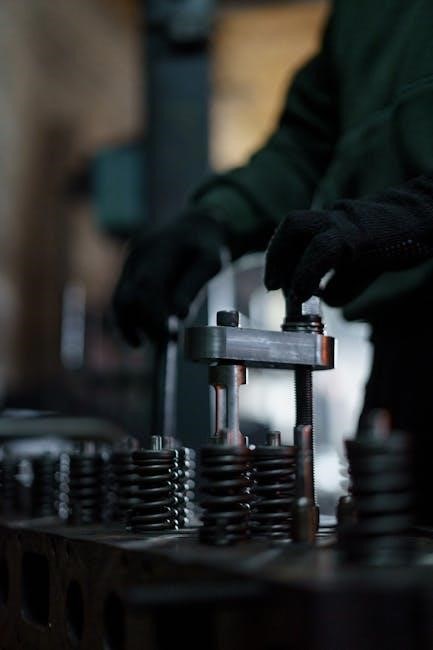
Safety Precautions and Best Practices
Ensure electrical safety by grounding the system and using insulated tools. Maintain proper ventilation and avoid overheating components. Always follow the manual and manufacturer guidelines for safe repairs and maintenance. Regular inspections prevent hazards and ensure optimal spa performance. Prioritize safety to protect yourself and extend the spa’s lifespan.
7.1 Electrical Safety and Grounding
When performing repairs on your Hot Springs spa, prioritize electrical safety to avoid accidents. Always disconnect the power supply before starting any work to prevent shocks or electrocution.
Ensure the spa’s electrical system is properly grounded, as specified in the manual. A grounded system protects against electrical hazards and ensures safe operation.
Use insulated tools to handle electrical components, and never work on live circuits. If unsure about any aspect, consult a licensed electrician to avoid risks.
Regularly inspect the grounding system and ensure all connections are secure. Faulty grounding can lead to dangerous conditions, so address any issues promptly.
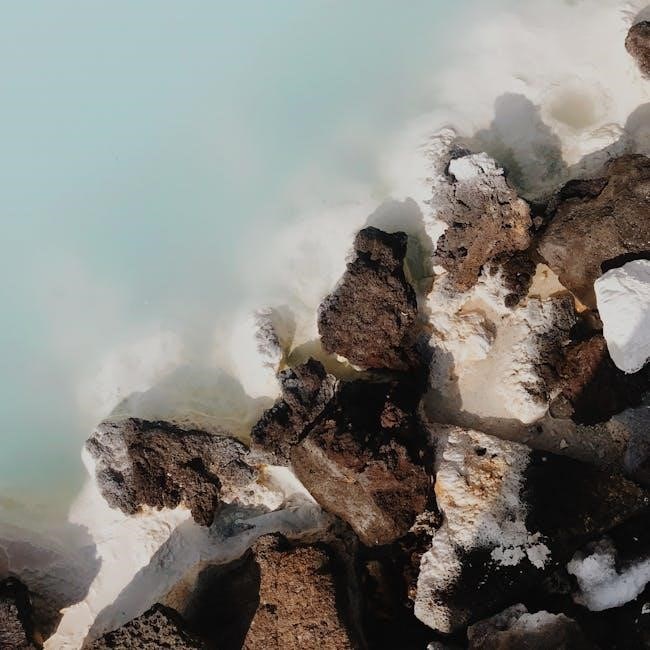
Follow the manufacturer’s guidelines for electrical safety and grounding to maintain a safe and reliable spa environment. Proper adherence prevents accidents and ensures longevity of the system.
Warranty and Professional Help
Understand your spa’s warranty coverage to ensure repairs are covered when needed. Contact authorized dealers for professional assistance with complex issues, ensuring compliance with manufacturer guidelines.
8.1 When to Call a Professional
Knowing when to consult a professional is crucial for effective Hot Springs spa repair. If you encounter complex electrical issues, major component failures, or problems beyond basic troubleshooting, it’s best to call a certified technician. They have the expertise and tools to handle advanced diagnostics and ensure repairs are done safely and correctly. Additionally, if your spa is under warranty, professional intervention may be required to maintain coverage. DIY attempts in such cases could void the warranty or lead to further damage. Always contact authorized dealers or service providers for reliable and efficient solutions, especially for older models or specialized systems.
Resources and References
Official Hot Springs spa manuals, available online, provide detailed repair guides and troubleshooting tips. Visit SpaParts123.com for genuine parts and model-specific resources to ensure accurate repairs.
9.1 Downloading the Official Manual
Downloading the official Hot Springs spa repair manual is straightforward. Visit the Hot Spring Spas website or authorized dealers’ portals to access PDF manuals for your specific model. Ensure you have Adobe Reader installed to view these documents. Manuals are organized by model year and include detailed repair guides, troubleshooting tips, and maintenance schedules. For older models (pre-1999), digital versions may not be available, so contact customer service for assistance. Once downloaded, bookmark important sections like troubleshooting and maintenance for quick reference. These manuals are essential for DIY repairs and understanding your spa’s components. Always refer to the official manual for accurate and safe repair procedures to maintain your spa’s optimal performance and longevity.
9.2 Online Forums and Communities
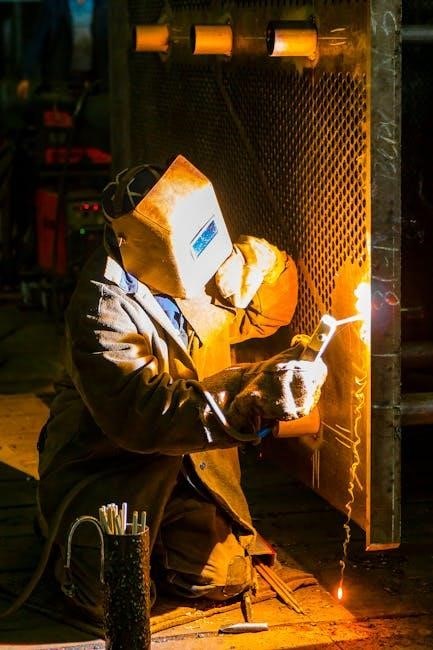
Online forums and communities are invaluable resources for Hot Springs spa repair. Platforms like SpaParts123.com and dedicated Hot Spring spa forums offer extensive discussions, troubleshooting tips, and real-world advice from experienced users and technicians. These communities provide a space to share repair experiences, ask questions, and gain insights from those who have faced similar challenges. Many forums include detailed repair guides, photos, and diagrams submitted by users, making them a comprehensive resource for DIY enthusiasts. Additionally, professional technicians often contribute to these forums, offering expert advice and recommendations. Engaging with these communities can help you identify common issues, learn repair techniques, and stay updated on the latest maintenance practices. They also serve as a platform to connect with local experts or find trusted service providers, ensuring your spa remains in optimal condition. By leveraging these resources, you can confidently address repairs and maintain your spa’s performance and longevity.
FAQs and Case Studies
This section addresses frequently asked questions about Hot Springs spa repairs and maintenance, offering practical solutions and insights through real-life case studies and user experiences.
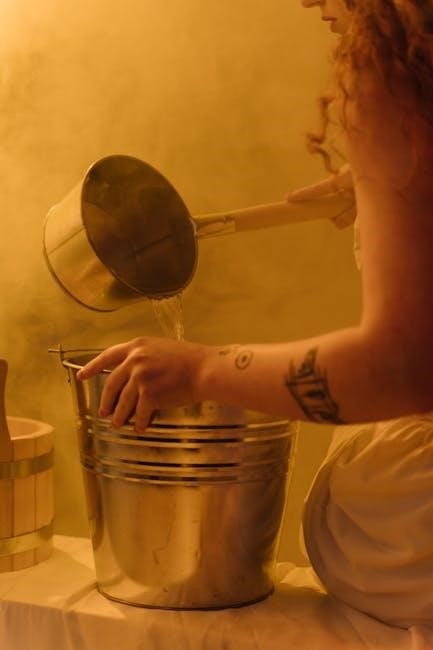
10.1 Frequently Asked Questions
Users often inquire about downloading manuals, troubleshooting common issues, and maintaining their Hot Springs spa. Questions include how to access manuals for older models, DIY repair tips, and where to find replacement parts. Many ask about specific error codes, jet malfunctions, and heating element replacements. Others seek advice on winterizing their spa and understanding electrical safety protocols. Some wonder about the differences between DIY repairs and professional services. Additionally, there are questions about warranty coverage and how to identify genuine parts. These FAQs aim to provide clear, concise answers to help users resolve common challenges and maintain their spa effectively. Troubleshooting guides and case studies offer practical solutions based on real-life scenarios, ensuring optimal spa performance and longevity.
